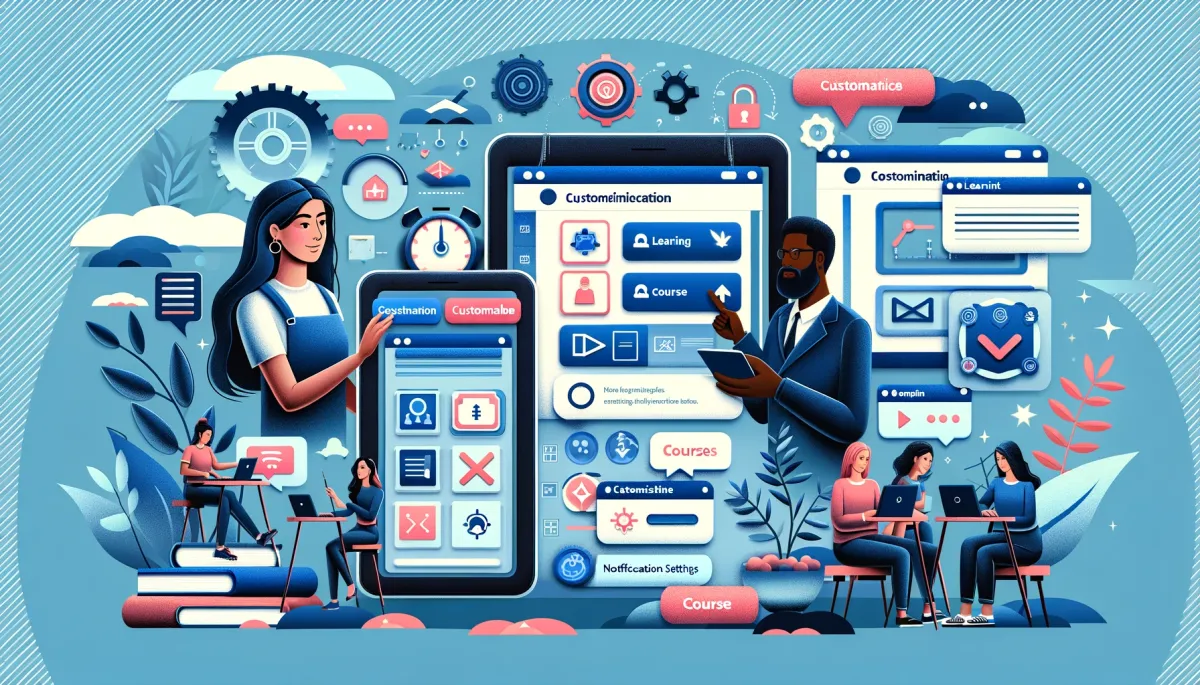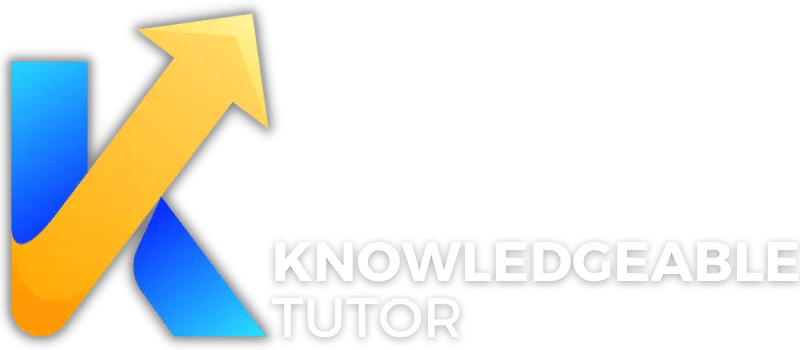Comparing The Top Online Tutoring Platforms

Fanie Naude
Last Updated: 29 Sep 2023

Fanie Naude
Last Updated: 29 Sep 2023

Introduction
The digital age has revolutionized the way we approach education. Online tutoring platforms have emerged as a pivotal component in this transformation, offering unparalleled convenience and a plethora of resources right at our fingertips. However, with a multitude of platforms available, making an informed decision becomes a daunting task. This article aims to be your ultimate guide in comparing the top online tutoring platforms of 2023.

Why Compare Online Tutoring Platforms?
The Overwhelming Choices
The first reason to compare online tutoring platforms is the sheer number of options available. From specialized platforms like Skooli, which focuses solely on math, to more generalized platforms like Chegg, the choices are overwhelming.
Quality Over Quantity
As the saying goes, "Quality is more important than quantity." The same applies to online tutoring platforms. Not all platforms are created equal, and some may offer better resources, more qualified tutors, or a more user-friendly interface than others.
Financial Investment
Online tutoring is not just an investment of time but also of money. Different platforms have different pricing models, and it's crucial to understand what you're getting into. For instance, some platforms offer subscription-based pricing, while others charge per session.
Technological Compatibility
Not all platforms are compatible with every device or operating system. Some platforms may offer better functionality on iOS devices, while others may be more Android-friendly.
Special Features
Some platforms offer unique features like AI-based assessments, interactive whiteboards, or peer-to-peer learning opportunities. These features can significantly enhance the learning experience but may also come at an additional cost.

Criteria for Comparison
Pricing
The cost is often the first thing people consider. It's essential to compare the pricing models, any hidden fees, and what each package includes.
User Experience and Interface
A platform could have the best tutors in the world, but if it's difficult to navigate, it's all for naught. User experience is a crucial factor in any comparison.
Subject Variety
The range of subjects offered can be a deciding factor, especially for those looking for tutoring in less common subjects like environmental science or art history.
Peer Collaboration Strategies
Some platforms offer peer learning opportunities, a feature backed by numerous studies to enhance educational outcomes.
Third-Party Tool Integration
The ability to integrate third-party tools can add immense value, as discussed in our article on Integrating Third-Party Tools with Your Online Tutoring Platform.
Customization Options
Customization can often be the key to effective learning. Platforms that allow tutors and students to tailor their learning environment hold a distinct edge.
This article aims to provide an in-depth comparison based on these criteria, offering you a comprehensive guide to making an informed decision.

Top Online Tutoring Platforms
Chegg
Chegg is a well-known name in the online tutoring space, offering a wide range of subjects and a user-friendly interface. It also provides textbook solutions, making it a one-stop-shop for students.
Features
- User-Friendly Interface: Easy navigation and quick access to resources.
- Wide Range of Subjects: From mathematics to humanities, Chegg covers it all.
- Textbook Solutions: A unique feature that sets Chegg apart.
Skooli
Skooli specializes in mathematics, offering a focused approach for students struggling in this subject.
Features
- Mathematics Specialization: A niche focus on all things math.
- Interactive Whiteboard: A feature that enhances the learning experience.
Varsity Tutors
Varsity Tutors offers a personalized learning experience, matching students with tutors based on their learning needs.
Features
- Personalized Matching: Algorithms that find the best tutor for you.
- Instant Tutoring: Get help within minutes through their Instant Tutoring feature.

Must-Have Features of Online Tutoring Platforms
According to eLearning Industry, the must-have features for an online tutoring platform include a user-friendly interface, robust search and filters, and comprehensive tutor profiles.
User-Friendly Interface
A platform could offer the best educational content, but if it's not easily navigable, it loses its effectiveness. The user interface should be intuitive, allowing both tutors and students to focus on the learning process rather than struggling with the platform's functionalities.
Robust Search and Filters
The ability to easily find what you're looking for is crucial. A robust search function, coupled with various filters, can make the user experience significantly more pleasant and efficient.
Comprehensive Tutor Profiles
Knowing your tutor's qualifications, expertise, and teaching style can make a world of difference. Comprehensive tutor profiles provide this information at a glance, helping students make informed decisions.
Interactive Features
Interactive and collaborative features like virtual whiteboards, text editors, and screen sharing are increasingly becoming standard in online tutoring platforms. These features not only make the learning process more interactive but also more effective.
Payment Options
Different platforms offer various payment options, from one-time payments to subscription models. Understanding these can help you choose a platform that suits your financial situation.

Pricing Models
The cost of online tutoring can vary significantly depending on the platform, the subject, and the tutor's expertise. According to Trafft, rates for online tutoring are usually priced between $18 and $30 per hour. Here are some common pricing models you'll encounter:
Subscription-Based
Platforms like Chegg often offer a subscription model where you pay a monthly fee for unlimited access to tutors and resources.
Pay-Per-Session
Some platforms charge per tutoring session, which can range from 30 minutes to an hour or more.
Package Deals
Platforms may offer package deals where you can purchase multiple sessions at a discounted rate. This is a common strategy, as highlighted by tpapt.
Free Trials
Many platforms offer free trials to give you a taste of their services before you commit financially.

User Experience and Interface
Accessibility
The platform should be easily accessible across various devices, including smartphones, tablets, and desktops.
Navigation
Ease of navigation is crucial. The platform should allow you to easily find tutors, schedule sessions, and access resources.
Responsiveness
The platform should be quick to load and free from bugs or glitches that could disrupt the learning process.
Design Aesthetics
While not a deal-breaker, a visually appealing interface can enhance the user experience.

Real-Life Examples and Case Studies
Chegg's User-Centric Design: Chegg's platform is designed with the user in mind, offering an intuitive interface that even the least tech-savvy can navigate. This focus on user experience has contributed to their success, as evidenced by their high customer retention rates.
Skooli's Specialized User Experience: Skooli offers a math-focused user interface, including specialized tools like equation editors, which has made it a hit among students seeking math tutoring.
Varsity Tutors' Instant Tutoring: One of the standout features of Varsity Tutors is its Instant Tutoring function, which has been lauded for its effectiveness in various reviews.
Understanding the pricing models and user experience can significantly influence your choice of an online tutoring platform. It's not just about the cost; it's also about what you get for that cost, both in terms of educational value and user experience.

Peer Collaboration in Online Tutoring
Peer collaboration in online tutoring is an often-overlooked but crucial element. It involves students teaching each other, aiding in retention, and encouraging communication and collaboration. According to Cornell University's Center for Teaching Innovation, collaborative learning can develop higher-level thinking, oral communication, self-management, and leadership skills.
Benefits of Peer Collaboration
Enhanced Engagement: Peer collaboration can significantly boost student engagement, as noted by LinkedIn.
Improved Retention: When students teach each other, they are more likely to retain the information, as highlighted by WGU.
Skill Development: Peer tutoring can help students develop communication skills, professional development, and teamwork, according to Together Platform.
Virtual Classroom Benefits: Peer tutoring in a virtual classroom can help students master educational skills, as pointed out by VEDAMO.

Third-Party Tool Integration
The ability to integrate third-party tools into an online tutoring platform can add immense value. For instance, integrating a tool like Google Drive can make it easier to share resources and collaborate on projects.
Popular Third-Party Tools
- Google Drive: For document sharing and collaboration.
- Zoom: For video conferencing and virtual classrooms.
- Kahoot: For interactive quizzes and assessments.
- Grammarly: For real-time grammar and spell-check.
Real-Life Examples and Case Studies
Google Drive in Chegg: Chegg allows the integration of Google Drive, making it easier for students and tutors to share resources. This feature has been well-received by users.
Zoom in Varsity Tutors: Varsity Tutors uses Zoom for their virtual classrooms, providing a seamless and reliable video conferencing experience.
Kahoot in Skooli: Skooli has integrated Kahoot for interactive quizzes, making learning more engaging and fun.
Understanding the benefits of peer collaboration and the value of third-party tool integration can help you make a more informed decision when choosing an online tutoring platform. These features not only enhance the learning experience but also provide additional avenues for skill development and engagement.

Customization Options
Customization is a key factor that sets apart online tutoring platforms. According to eLearning Industry, a platform should offer customization options that allow both tutors and students to tailor their learning environment.
Branding and Themes
Platforms like TutorCruncher offer customizable branding options, allowing tutors to align the platform with their brand identity, as highlighted by GetApp.
Learning Paths
Some platforms allow you to set learning paths, enabling a more structured approach to tutoring.
Interactive Tools
Customizable interactive tools like whiteboards and quizzes can make the learning experience more engaging.

Security and Privacy
Security is a paramount concern in the digital age. Platforms should offer robust security measures to protect user data and privacy.
Data Encryption
Secure data encryption is a must to protect sensitive information.
Two-Factor Authentication
An additional layer of security that many users find reassuring.
Compliance
Platforms should comply with regulations like GDPR to ensure data privacy.

Reviews and Testimonials
User reviews and testimonials can provide invaluable insights into the effectiveness of a platform.
Chegg: Users often praise the platform's user-friendly interface and wide range of subjects.
Skooli: The platform is lauded for its focus on math and the quality of its tutors.
Varsity Tutors: Known for its personalized matching system, the platform has received positive reviews for its effectiveness.
Real-Life Examples and Case Studies
Chegg's Customization: Chegg allows users to choose their tutors, offering a level of customization that has been well-received, as evidenced in various user reviews.
Skooli's Security Measures: Skooli places a high emphasis on security, offering features like two-factor authentication, which has been praised in user testimonials.
Varsity Tutors' User Reviews: The platform's user reviews often highlight its effective personalized matching system, as seen on Trustpilot.
For more in-depth information on selecting the right platform for your specific tutoring needs, you can visit our article on Selecting the Right Platform for Your Specific Tutoring Needs.
This section aims to provide you with a comprehensive understanding of customization options, security measures, and what real users are saying about these platforms, thereby aiding you in making an informed choice.

Frequently Asked Questions (FAQs)
The FAQ section aims to address common questions and concerns that readers may have when comparing online tutoring platforms. These questions are designed to align with what people are likely to ask, as seen in Google's "People also ask" section for the keyword "Comparing The Top Online Tutoring Platforms."
1. What are the key factors to consider when comparing online tutoring platforms?
Answer: The key factors include the range of subjects offered, pricing models, user experience, and additional features like peer collaboration and third-party tool integration. For a detailed comparison, you can refer to our article on Comparing the Top Online Tutoring Platforms.
2. Which online tutoring platform is the best for math?
Answer: Skooli is often recommended for its focus on math tutoring. It offers specialized tools like equation editors to facilitate math learning.
3. How do pricing models differ among online tutoring platforms?
Answer: Pricing models can vary from subscription-based to pay-per-session or package deals. Some platforms also offer free trials. For more information, visit our section on Pricing Models.
4. Are there any security concerns with online tutoring platforms?
Answer: Reputable platforms usually offer robust security measures like data encryption and two-factor authentication. Always check for compliance with regulations like GDPR.
5. How do I know if a platform's tutors are qualified?
Answer: Most platforms have a rigorous vetting process for tutors, often requiring them to have a bachelor's degree or higher and specialized training in the subject they are tutoring.
6. Can I customize my learning environment on these platforms?
Answer: Yes, many platforms offer customization options like branding, learning paths, and interactive tools. For more details, you can read our article on Customizing Your Online Tutoring Environment on Popular Platforms.
7. What are the benefits of peer collaboration in online tutoring?
Answer: Peer collaboration enhances engagement, improves retention, and helps in skill development. For data-backed insights, refer to our section on Peer Collaboration Strategies.
8. How do user reviews and testimonials help in making a choice?
Answer: User reviews provide real-world insights into the effectiveness and user-friendliness of a platform. Always consider these when making your decision.
9. Can I integrate third-party tools like Google Drive and Zoom?
Answer: Yes, some platforms allow the integration of third-party tools to enhance the learning experience. For more, visit our article on Integrating Third-Party Tools with Your Online Tutoring Platform.
10. What additional resources can help me make an informed decision?
Answer: You can refer to articles, user reviews, and comparison guides like those found on Clascity and Verywell Family for more comprehensive information.
This FAQ section is designed to be a quick reference guide, answering the most commonly asked questions about comparing online tutoring platforms. For more in-depth information, feel free to explore the various sections of this comprehensive article.

